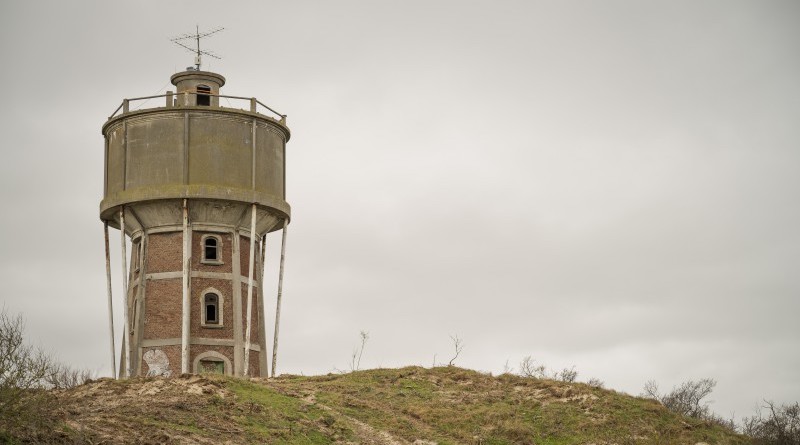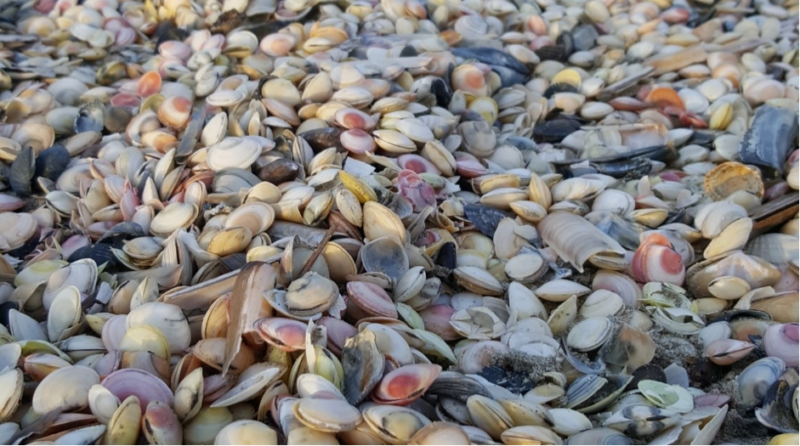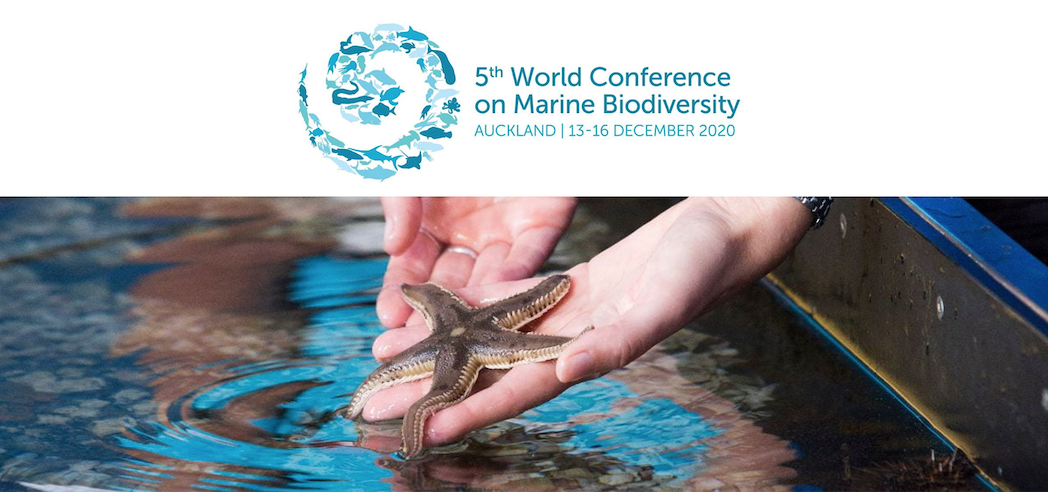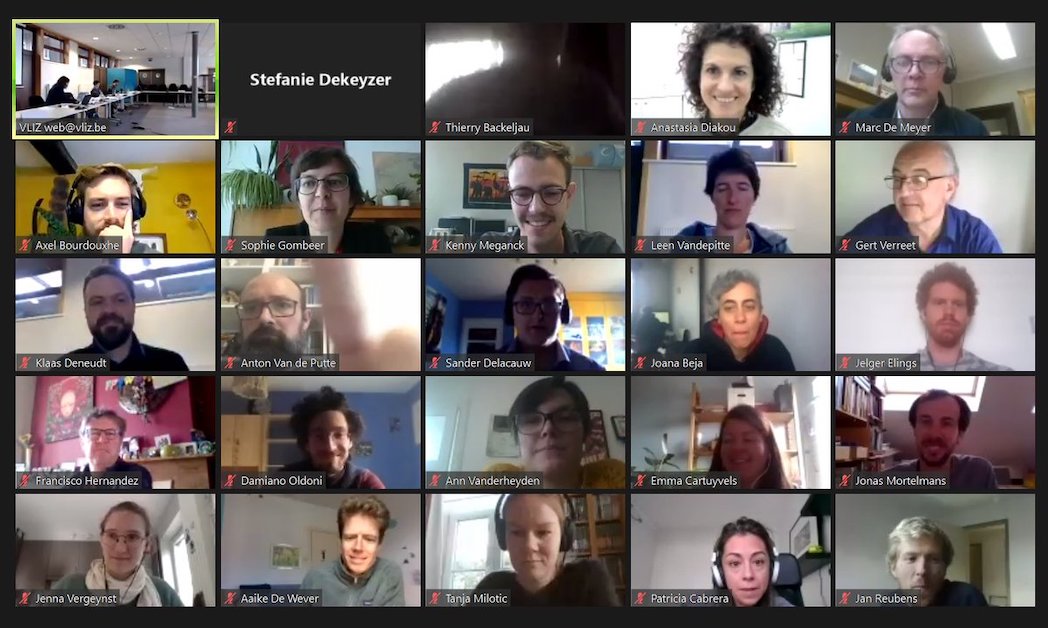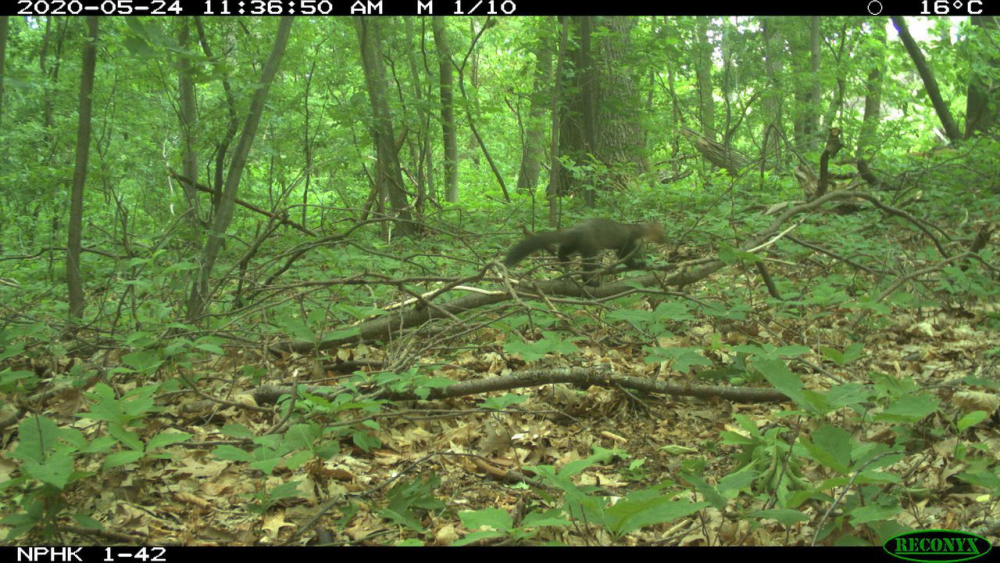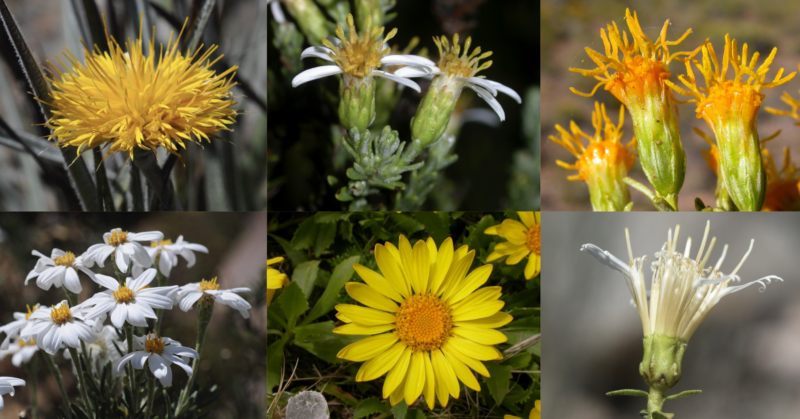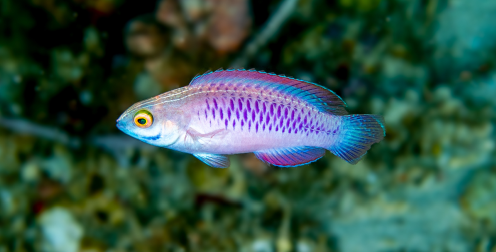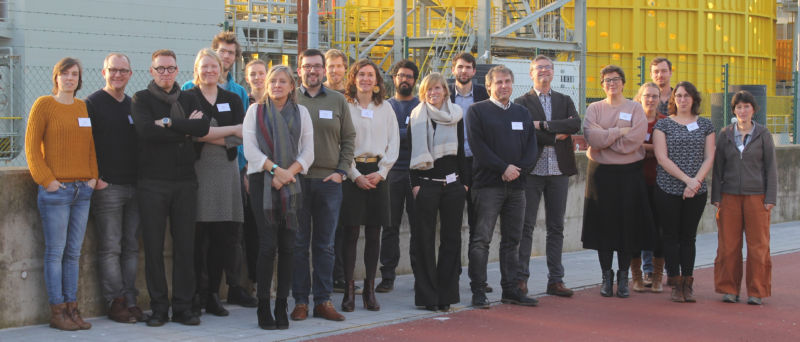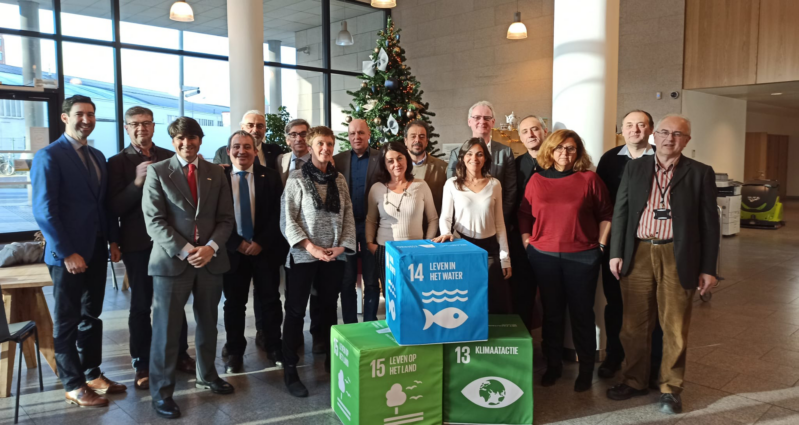The new antenna station in the Wenduine water tower, near the popular tourist destination of Ostend on the Flemish North Sea coast, is gathering data to better understand and protect bat migration routes as part of the wider wildlife tracking network known as Motus.
Continue reading‘Baltic tellin’ Queen of the 4th Belgian Big Seashell Survey
On Sunday 14 March 2021, the fourth edition of the Big Seashell Survey took place along the Belgian coast as part of the LifeWatch programme.
Continue readingLifeWatch Flanders ready for the next level
The Flemish LifeWatch Consortium kicked off a new project phase on 1 January 2021, secure that additional funding had been approved to provide continuing support to biodiversity data systems and observation infrastructure. Confirmation of success in its bid for the 2020 International Research Infrastructure funding, organised by the Research Foundation – Flanders (FWO) and financed by the Flemish Department of Economy, Science and Innovation (EWI) was announced on 16 December 2020. A virtual meeting on 5 January 2021 of the Flemish LifeWatch partners, the Flanders Marine Institute (VLIZ) and the Research Institute for Nature and Forest (INBO), was attended by 35 enthusiastic team members in a clear demonstration that the infrastructure is ready to move to the next level. The two-hour conference included presentations from Working Groups on:
- The LifeWatch Species Information Backbone
- Marine terrestrial and freshwater observatories
- ICT Infrastructure and system integration
- Virtual labs and Open Science, and
- Outreach, valorisation and user support
Built up in the period 2012-2020, these facilities generate open data through automated and innovative pipelines, serving users from science, industry, policy and civil society. The next phase of the project will optimise and enhance the research infrastructure, delivering significant outcomes for Flanders, Europe and beyond. The project will apply a novel approach based on the quadruple helix framework, closely engaging with citizens, industrial players, policy makers and scientists in the data collection, analysis and decision making of the project, to promote the use of the Flemish LifeWatch infrastructure.
World Conference on Marine Biodiversity 2020
The World Conference on Marine Biodiversity 2020 was successfully presented online between Sunday 13 – Wednesday 15 December 2020, by the University of Auckland, New Zealand. A state-of-the-art virtual conference platform, that facilitated interactive plenary sessions, live panel discussions, filmed presentations, e-posters, a meeting hub and virtual exhibition areas, attracted over 400 participants.
LifeWatch ERIC was privileged to be able to support the international event as platinum sponsor. Chief Executive Officer Christos Arvanitidis, in a pre-recorded video message broadcast at the start of proceedings, warmly welcomed the participants, wishing them good luck and a great remote conference, inviting them to support the United Nations decade of ocean science for sustainable development and to become part of the LifeWatch ERIC global community.
The CEO’s emphasis on open access data, reproducible analytics and mobilised communities was reinforced by a dedicated webpage offering details of those LifeWatch ERIC products of greatest interest to marine biologists, with the Metadata Catalogue in prime position. National Nodes contributed materials on Micro-CTvLab, RvLab and MedOBIS (Greece), the LifeWatch Species Information Backbone, the Marine Observatory and three Antarctic services (Belgium), and EcoPortal (Italy).
LifeWatch ERIC staff from these member countries were also on hand at the virtual stand during the coffee breaks to maximise human interaction, in spite of the 12-hour time zone difference. The booth created considerable interest, with over 200 visitors overall and 85 downloads of brochures and other links.
LifeWatch Belgium 3rd Users & Stakeholders Meeting
LifeWatch Belgium: a highly innovative infrastructure for biodiversity research.
Interaction at the third edition of the LifeWatch.be Users & Stakeholders Meeting, 15-16 October 2020, took place entirely online, because of the Covid-19 pandemic. LifeWatch Belgium is a high-technology virtual laboratory for biodiversity research, and the Belgian LifeWatch community meet every year to showcase progress made. Open to all users and stakeholders of the infrastructure, the event this year attracted 100 registrations from a multitude of Belgian research institutes, universities and policy bodies, who were pleased to find the proceedings interesting and insightful.
After an introduction from Klaas Deneudt of the Flanders Marine Institute (VLIZ), Day One featured users’ stories from Belgian LifeWatch partners:
- The World Ocean Assessment, a global exercise supported by the LifeWatch Species Information Backbone (Leen Vandepitte, VLIZ)
- Downstream migration through a shipping canal: challenges on the road (Jenna Vergeynst, UGent)
- Comparison of methods to model species habitat networks for decision-making in nature conservation: the case of the wildcat in southern Belgium (Axel Bourdouxhe, LifeWatch-WB)
- Biodiversity.aq and POLAAAR portal use case: DNA metabarcoding of the prey and microbiome of museum specimens of Antarctic fishes (Henrik Christiansen, Biodiversity.aq)
- The need for accurate and comprehensive DNA sequence databases to reliably identify species of policy concern (Kenny Meganck and Sophie Gombeer, BopCo).
The second day, 16 October, was the turn of the Belgian LifeWatch partners to demonstrate specific aspects of the infrastructure:
- LifeWatch data R package (Lennert Schepers, VLIZ)
- Agouti: A platform for managing wildlife camera-trapping projects (Tanja Milotic, INBO)
- Exploring the landscape via the ecotopes with GIS softwares (Julien Radoux, LifeWatch-WB)
- POLA3R (Maxime Sweetlove, Biodiversity.aq)
- The process of DNA-based species identification: bushmeat as a case story (Ann Vanderheyden, BopCo).
The event clearly demonstrated that the Belgian LifeWatch community is an involved and active one. The multitude of interesting and impressive user stories highlighted the individual projects that are going on and the immense progress that LifeWatch Belgium is making. Click here for the program, including links to the presentations and demonstration videos.
The demonstration videos that were shown during the second day of the Users & Stakeholders Meeting are now available here on the LifeWatch.be website
Rare European Pine Marten captured by the camera trap network
The camera trap network CATREIN recently captured a European pine marten on image in Heverleebos, a forest south of the city of Leuven, Belgium.
The main purpose of the camera traps installed in the area is to study the presence and distribution of wild boar. To make that possible, cameras are positioned randomly in the larger area of Meerdaalwoud, Heverleebos and the Dijle valley. The camera locations are changed monthly, in collaboration with the local hunters and a nature conservation NGO. The image annotation process is done in Agouti.
Recently, one of the cameras in Heverleebos unexpectedly filmed a European pine marten. Observations of this species have become rare in the region. Twenty years ago, the species was even thought to be extinct in Heverleebos. Nevertheless, the larger region of Meerdaalwoud has always been a suitable habitat for European pine martens. The rediscovery illustrated again the potential of the use of CT in collaboration with local stakeholders as a non-invasive tool to monitor and detect both general and rare illusive and/or night-active species. Camera trap software such as Agouti to annotate both target species and by-catch species creates a great potential for safeguarding these observation records for the future.
The camera trap network CATREIN is part of the Flemish LifeWatch infrastructure. You can read more about the Rare European pine marten captured by the camera trap network here and here.
LifeWatch Species Information Backbone
The LifeWatch Species Information Backbone (LW-SIBb) facilitates the standardisation of species data and the (virtual) integration of many distributed biodiversity data repositories and operating facilities. Built on expert-validated and literature-based information, the LW-SIBb is structured in different open data systems for taxonomy, biogeography, genetics and species traits. It is the driving force behind the species information services of the Belgian LifeWatch.be e-Lab. Several taxonomic data systems, species registers, nomenclatures and taxonomy-related projects contribute to the LifeWatch Species Information Backbone. They all help to make the Species Information Backbone more complete, either by an active collaboration to fill gaps, opening their data system for data exchange or by making their data accessible through web services. Recently, two major milestones were reached within the Backbone.
Firstly, the data rescue and secured continuation of the Global Compositae Database into the Aphia platform has become a fact. Although Compositae (or Asteraceae) are not even remotely linked to the marine environment, the Aphia database – the platform behind the World Register of Marine Species (WoRMS) – is suitable for managing non-marine taxa as well. Rather than letting this enormous resource of Compositae information run the risk of disappearing, the WoRMS Data Management Team undertook to transfer it to the Aphia platform, starting work in 2017. That transfer has now been completed.
Secondly, the Interim Register of Marine and Nonmarine Genera (IRMNG) is a compilation of genus names that covers both living and extinct biota in a single system to support taxonomic and other queries dealing with e.g. homonyms, authorities, parent-child relationships, spelling variations and distinctions between marine and non-marine or fossil and recent taxa. IRMNG provides the most complete and consistent coverage of all kingdoms of life presently available in such a form and serves to illustrate the scope of a project for a more detailed survey of “all the genera of the world” as well as providing a comparison with existing lists and preliminary content that can be of value for the compilation of new lists.Like the Compositae Database, IRMNG, which was originally started and managed by the CSIRO in Australia, has also experienced a major data rescue and become an integrated part of the LifeWatch Species Information Backbone, accessible through its very own portal, and through the LifeWatch e-services.
Ten remarkable new marine species from 2019
As in previous years, the World Register of Marine Species (WoRMS) has again released the annual list of the top-ten marine species described by researchers during the year 2019 to coincide with World Taxonomist Appreciation day – 19 March!
Every day in labs, museums, out on fieldwork, taxonomists are busy collecting, cataloguing, identifying, comparing, describing and naming species new to science. Some 500 experts globally also contribute their valuable time to keeping the World Register of Marine Species up to date.
Today is a chance for us at WoRMS to thank all our editors for this important task. And we celebrate the work of taxonomists now with the WoRMS list of the top-ten marine species described in 2019 as nominated and voted for by taxonomists and journal editors!
This top ten list is just a small highlight of almost 2,000 fascinating new marine species discovered every year. Each of these marine animals has a story. This year the chosen species are in some cases particularly small, large, hidden or rather sparkly! We feature the unusual light-producing Christmas-Light Brittle Star and the Star-of-the-Sea Seed Shrimp; the tiny Brenner’s Bobtail Squid; cryptic Boring Amphipods and Green Rat Clingfish; and even a giant Mediterranean Branching Placozoan (well, giant for a placozoan…).A list of the ‘Top Ten Species’ described from ALL habitats and taxa has been announced annually since 2008 by the State University of New York College of Environmental Science and Forestry (ESF). The oceans cover over 70% of the surface of our planet, and yet they still include the least explored regions. Although the ESF list often contains one or two marine species, we decided to pay homage to the ‘largest habitat on earth’ by producing our own list of the top marine species.
Go to the LifeWatch Belgium press release for details of these ten remarkable new marine species from 2019.
Marine Industry Workshop
On 23 January 2020, the LifeWatch team at VLIZ, the Flanders Marine Institute, organised a full day consultation with a number of interested international engineering and environmental firms at the first LifeWatch Maritime Industry Workshop in Ostend, Belgium. The organisations represented included the Jan De Nul Group, DEME, Maritech, Haedes, the Antea Group, Blue Cluster and Arcadis.
The day’s proceedings afforded LifeWatch Belgium the opportunity to present its marine observatory, sensor networks and data systems, illustrated by use cases that highlighted the industrial use of LifeWatch data, services and expertise. The interactive discussion that followed provided some interesting ideas on ways in which the LifeWatch Research Infrastructure could meet the needs of engineering and environmental enterprises and help create more win-win situations.
This workshop was acclaimed as the first step towards a sustainable collaboration between LifeWatch and innovative industry partners to meet the growing need for greater integration between industry, science and data. The launch of the LifeWatch Maritime Industry Advisory Board will follow later this spring. For more information, contact info[@]lifewatch.be.
5th LifeWatch ERIC General Assembly
The Dirk Bouts Building in the Flemish Administrative Centre (VAC) in Leuven, Belgium, was the scene for the 5th LifeWatch ERIC General Assembly, from 11–12 December 2019, chaired by Gert Verreet. Composed of the representatives from all full Member States and observers, the purpose of General Assembly Meetings, the highest governing body of LifeWatch ERIC, is to set the overall direction and to supervise the development and operation of LifeWatch ERIC.
At the heart of this 5th General Assembly lies the prototype of the LifeWatch ERIC Platform, an integrated initiative of LifeWatch ERIC Common Facilities presented by the CTO, Dr Juan Miguel González-Aranda. Thanks to its application layers and user-friendly interfaces, the prototype will enable the integration of all the resources, including web services developed by National Nodes over the years, as well as those resulting from Common Facilities and Joint Initiatives, like the recent investigation undertaken by the infrastructure members on the current and future challenges of NIS in Europe, into Virtual Research Environments (VREs). The prototype was adopted by the General Assembly, officially marking the beginning of the deployment and operational phase, with its implementation expected to continue until the end of next year.
With many other important issues on the agenda, this rich two-day meeting moved from a review of LifeWatch ERIC activities in 2019 to forward planning for 2020 and delivering general frameworks for implementation. Among these, the Assembly approved the general framework for Service Level Agreements (SLAs) to be used as the basis for a roll-out to national nodes in the course of the year, and an engagement policy to reinforce our dialogue with – and capacity to reach out to – external stakeholders. By finalising the rules and procedures for subsidiary bodies, and having established the selection committee to complete the recruitment of one of the most strategic positions, the Chief Financial Officer, LifeWatch ERIC will be in good shape to hit the ground running in 2020.
